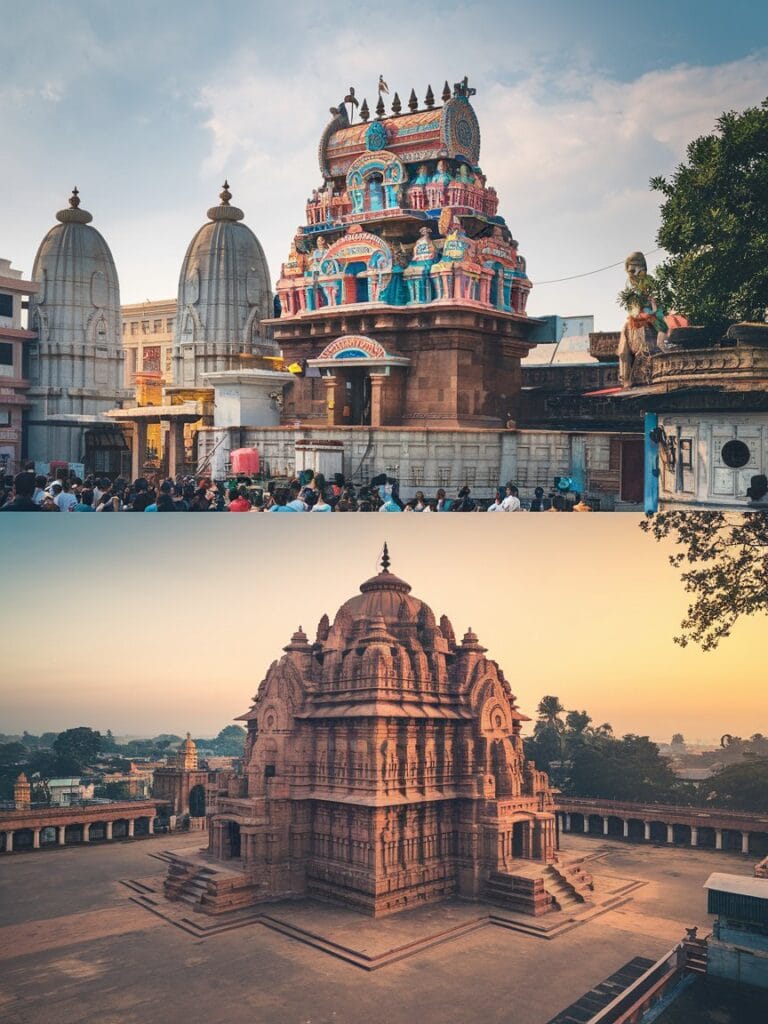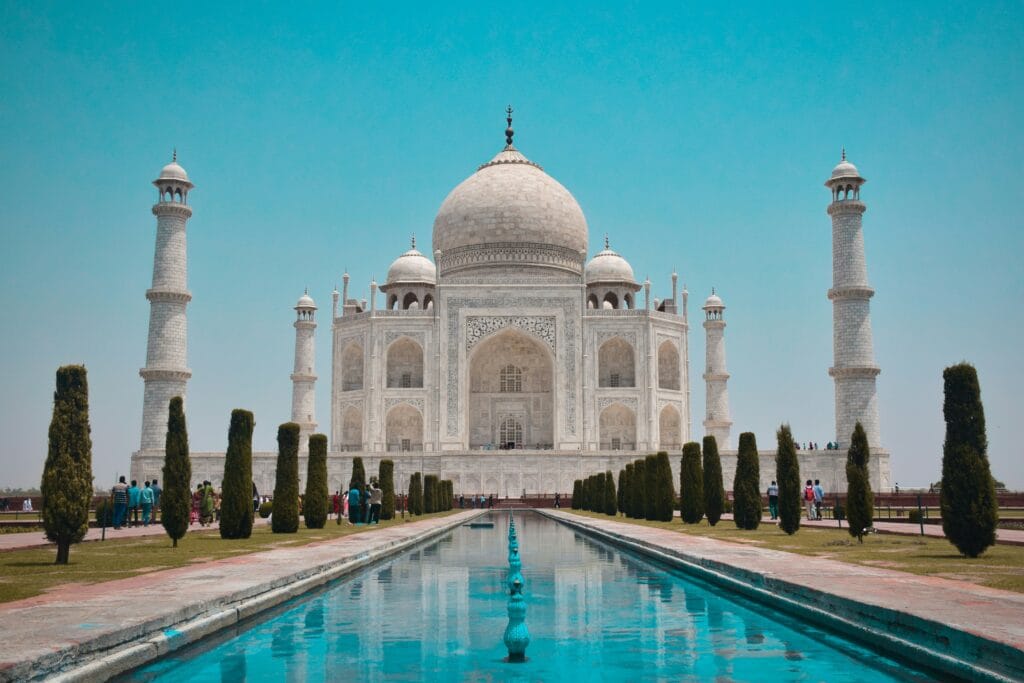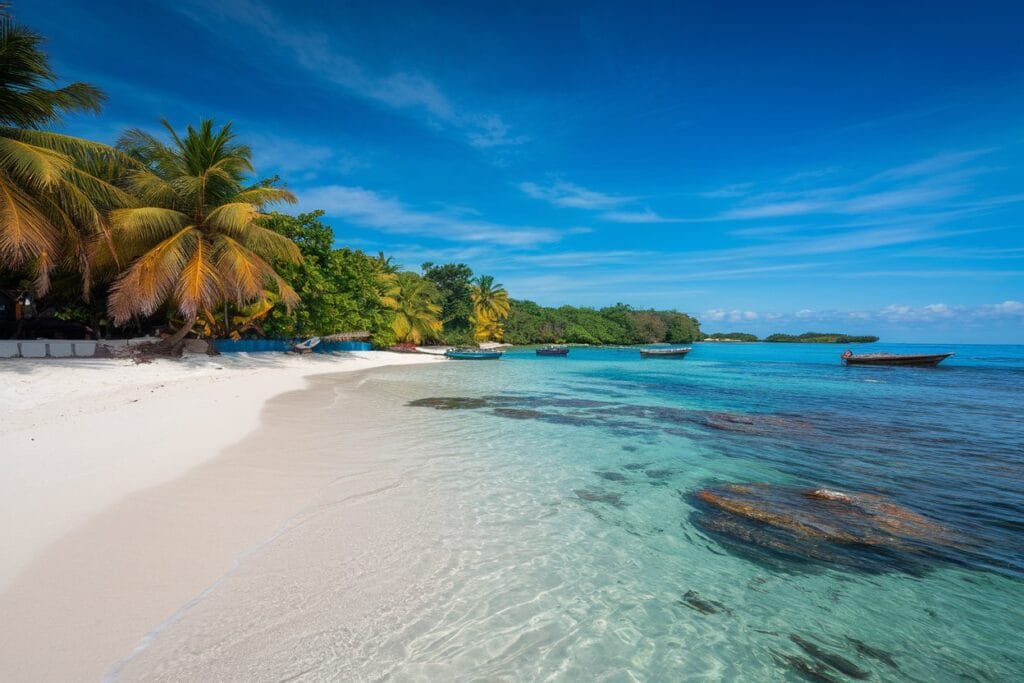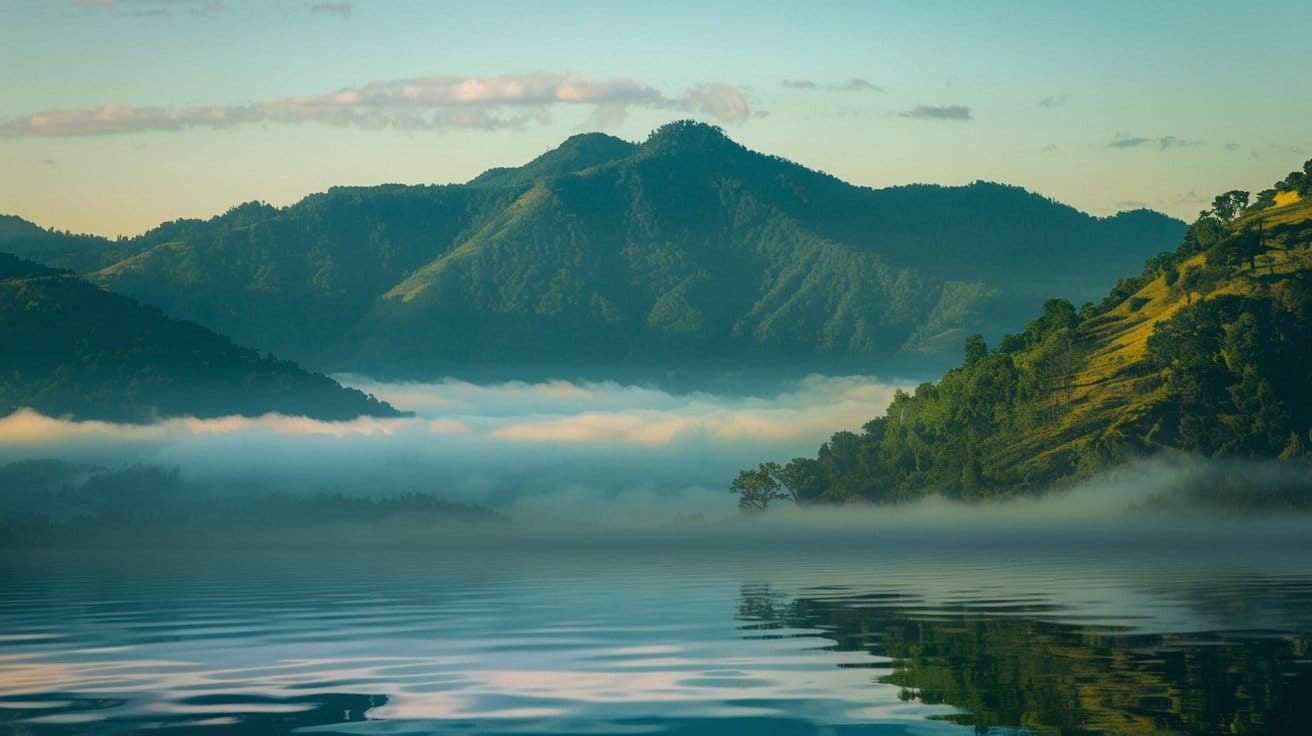
Eastern and Northeastern India
Introduction
India is a land of diverse cultures, landscapes, and traditions, offering a rich variety of travel experiences. While the northern and western parts of the country are frequently in the spotlight, Eastern and Northeastern India is a hidden gem waiting to be explored. This region, characterized by lush green landscapes, pristine mountains, and vibrant local cultures, offers a mix of adventure, tranquility, and history. Whether you’re seeking peace in nature, an immersive cultural experience, or scenic beauty, Eastern and Northeastern India should be on your travel radar. Let’s take a journey through the best places to visit in this fascinating region.
Regional Highlights
Exploring Arunachal Pradesh
Eastern and Northeastern India are regions brimming with natural beauty, cultural diversity, and unparalleled adventure. Among these states, Arunachal Pradesh stands out as a thrilling destination for those who crave the outdoors and seek experiences beyond the ordinary. Let’s dive into why Arunachal Pradesh is truly a haven for adventure seekers.
A Haven for Adventure Seekers
Arunachal Pradesh, often referred to as the “Land of the Rising Sun,” is a paradise for adventurers. With its rugged mountains, gushing rivers, dense forests, and remote valleys, the state offers a variety of activities that cater to thrill-seekers and nature enthusiasts alike.
Trekking Through Untamed Wilderness
The treks in Arunachal Pradesh are unparalleled, offering routes that pass through pristine landscapes and untouched terrain. The Tawang-Chu Valley trek is one of the most popular, providing breathtaking views of snow-capped peaks and serene monasteries. For the more daring, the Sela Pass trek, at an altitude of 13,700 feet, challenges adventurers with its high-altitude trails and mesmerizing scenery.
The state is also home to Namdapha National Park, where trekking amidst dense forests lets you encounter rare wildlife and the raw beauty of nature.
White-Water Rafting in Wild Rivers
The mighty rivers of Arunachal Pradesh, such as the Siang, Subansiri, and Kameng, are perfect for white-water rafting. These rivers offer rapids ranging from moderate to extreme, making them a favorite among adrenaline junkies. Rafting in the Siang River, often called the “lifeline of Arunachal,” provides not only an adrenaline-pumping experience but also views of lush landscapes and steep gorges.
Paragliding and Other Aerial Adventures
For those who dream of soaring through the skies, paragliding in Arunachal Pradesh is an unforgettable experience. The state’s lofty hills and expansive valleys provide excellent conditions for aerial sports. Bomdila and Dirang are emerging hotspots for paragliding, offering spectacular views of the Eastern Himalayas from above.
Exploring Remote Mountain Passes
Arunachal Pradesh boasts some of the highest and most remote mountain passes in India. The Bum La Pass, located near Tawang, is not just an adventure but a journey through history as it was part of the old trade route between India and Tibet. Similarly, the Ziro Valley, with its rolling hills and vibrant cultural festivals, offers a mix of adventure and cultural immersion.
Camping and Off-Roading
For those who prefer a slower pace, camping under the starry skies of Arunachal Pradesh is an experience like no other. Adventure lovers can also explore the state’s rugged terrain through off-roading, especially in regions like Mechuka, known for its stunning landscapes and remote charm.
Conclusion
Arunachal Pradesh truly lives up to its title as “a haven for adventure seekers.” Whether you’re trekking through unspoiled wilderness, rafting down roaring rivers, or exploring high mountain passes, this northeastern jewel promises an experience of a lifetime.
If your heart beats for adventure, pack your bags and let Arunachal Pradesh redefine your idea of thrill and exploration.
West Bengal: A Blend of Colonial Charm and Serene Hill Stations
West Bengal, a state located in the eastern part of India, is a fascinating destination that offers travelers a harmonious blend of history, culture, and nature. From its colonial past to the tranquil hill stations, West Bengal is a treasure trove for those seeking diverse experiences. Whether you’re a history enthusiast drawn to the legacy of British rule or a nature lover craving the serenity of the hills, this state has something to captivate everyone.
Colonial Charm: A Walk Through History
The colonial history of West Bengal is most prominently reflected in its capital, Kolkata (formerly Calcutta). As the capital of British India until 1911, Kolkata is a city that wears its past proudly, with remnants of British architecture and culture scattered throughout the city. The iconic Victoria Memorial, which stands tall against the backdrop of lush green gardens, is one of the finest examples of colonial architecture in India. This grand structure, built in memory of Queen Victoria, continues to serve as a symbol of the city’s rich colonial history.
Another must-visit in West Bengal is the Howrah Bridge, an engineering marvel that connects Kolkata to its neighboring Howrah district. The bridge is an architectural wonder and one of the busiest in the world, offering a stunning view of the Hooghly River and the city skyline. As you stroll along the riverbanks, the colonial charm of the city comes alive in the form of old bookshops, vibrant markets, and charming streets lined with grand buildings.
The city’s British heritage is not just confined to architecture; it extends to its cultural life as well. From the grandiose of the Indian Museum, the oldest museum in India, to the traditional dance and music performances, Kolkata embraces its colonial past while blending it with the vibrant Bengali culture. The combination of colonial charm and local traditions makes West Bengal a city that is both nostalgic and dynamic, drawing visitors who appreciate history, art, and culture.
Serene Hill Stations: A Tranquil Escape from the Hustle
While West Bengal is known for its bustling cities and rich cultural life, the state is also home to some of India’s most serene hill stations. These hill stations, nestled in the foothills of the Himalayas, offer a peaceful retreat from the heat and chaos of the plains.
The most famous hill station in West Bengal is undoubtedly Darjeeling, often referred to as the “Queen of the Hills.” Located at an altitude of over 6,700 feet, Darjeeling offers stunning views of the snow-capped peaks of the Himalayas, including the majestic Kanchenjunga, the third-highest mountain in the world. The town is known for its tea gardens, where you can take a stroll amidst the lush greenery, learning about the tea-making process and sampling some of the finest Darjeeling tea. A ride on the famous Darjeeling Himalayan Railway, also known as the “Toy Train,” is an unforgettable experience, offering a charming and nostalgic way to view the hill station.
Not far from Darjeeling, the hill station of Kalimpong offers a quieter alternative, with its serene landscapes, Buddhist monasteries, and panoramic views of the surrounding mountains. Kalimpong’s relaxed atmosphere, combined with its beautiful gardens and colonial-era bungalows, makes it a perfect place to unwind.
Another serene escape in West Bengal is the lesser-known town of Mirik, which is often overshadowed by its more famous neighbors. Located around 50 kilometers from Darjeeling, Mirik is known for its pristine lake, the Sumendu Lake, surrounded by hills covered in tea estates. The cool climate and peaceful surroundings make Mirik a great destination for nature lovers and those seeking tranquility.
These hill stations, with their breathtaking views, cool weather, and lush landscapes, provide a refreshing break from the heat and hustle of urban life. Whether you choose the vibrant Darjeeling or the quiet beauty of Kalimpong and Mirik, West Bengal’s hill stations offer the perfect retreat for those looking to reconnect with nature.
West Bengal is a state that beautifully combines its colonial legacy with natural beauty. From the historic streets of Kolkata to the serene hill stations nestled in the Himalayas, the state offers something for every traveler. Whether you’re exploring the remnants of British rule or unwinding in the cool, peaceful hill stations, West Bengal will leave you with unforgettable memories of both history and tranquility.
Kolkata, West Bengal
Known as the "City of Joy," Kolkata is Famous for Its Colonial Architecture, Vibrant Arts Scene, and Delectable Cuisine
Kolkata, often referred to as the “City of Joy,” is the beating heart of West Bengal. This bustling metropolis is a perfect blend of old-world charm and modern vibrancy. As the cultural capital of India, Kolkata boasts iconic landmarks like the Victoria Memorial, Howrah Bridge, and St. Paul’s Cathedral. The city is also known for its literary heritage, street food, and a thriving art scene.
A walk through College Street, fondly called “Boi Para,” immerses you in a world of books and intellectual conversations. The lively markets, such as New Market, offer a glimpse into the daily life of the city. Kolkata’s soul comes alive during Durga Puja, when the city transforms into a festive paradise.
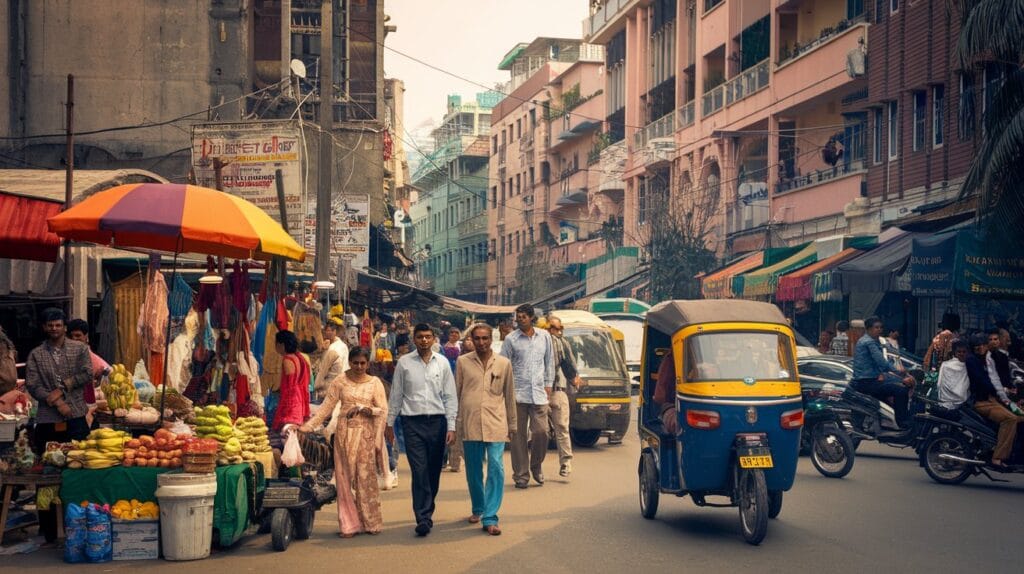
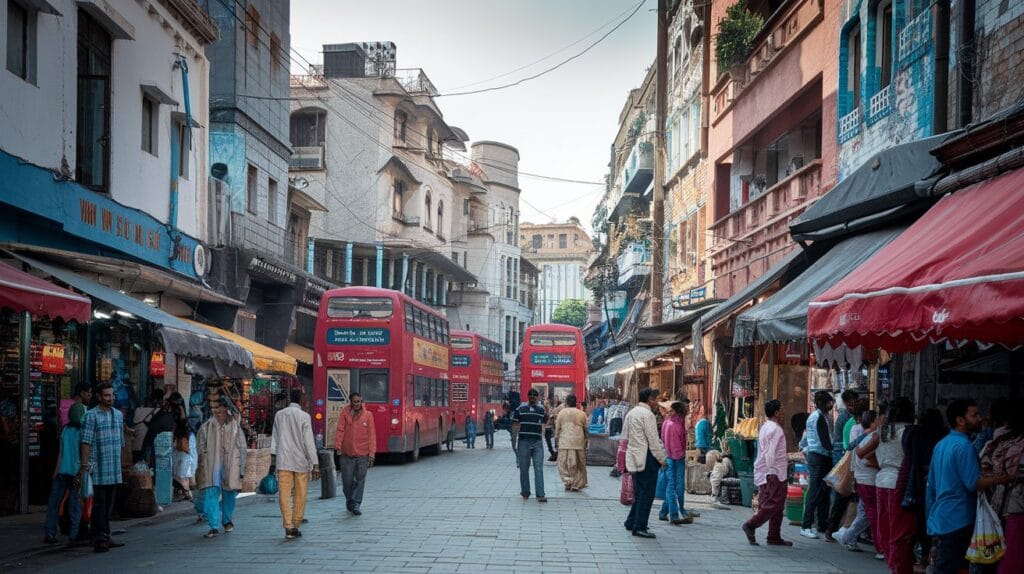
Colonial Architecture
Kolkata, West Bengal is a city where the grandeur of the colonial era still stands tall. The cityscape is dotted with majestic buildings, reflecting its glorious past as the British capital. Structures like the Victoria Memorial and Howrah Bridge are stunning examples of colonial architecture. These buildings evoke a sense of nostalgia, offering a glimpse into a bygone era. The Indian Museum, one of the oldest museums in India, also showcases impressive colonial-era design along with its fascinating collections. As you walk through Kolkata’s streets, you’ll be transported to an era when the city was at the center of India’s intellectual and cultural life.
Vibrant Arts Scene
Kolkata, West Bengal has long been a hub of artistic expression and creativity. The city is home to numerous art galleries, theaters, and cultural festivals that celebrate the rich artistic heritage of India. The Academy of Fine Arts and the Birla Academy of Art & Culture are two of the city’s major cultural institutions. Kolkata’s theatre scene is renowned for its diversity and vibrancy, with productions ranging from classic plays to contemporary performances. The city also hosts the Kolkata International Film Festival, showcasing the best of international and Indian cinema. Artists, poets, and musicians alike find their home in this city, making it a true cultural haven in Eastern India.
Delectable Cuisine
When it comes to food, Kolkata, West Bengal is nothing short of a culinary paradise. The city is known for its distinct Bengali cuisine, which combines rich flavors and traditional cooking techniques. From street food like pani puri, kathi rolls, and mangshor jhol (mutton curry) to the famous rasgulla and sandesh, the city offers a delectable feast for the senses. The sweet shops of Kolkata are particularly renowned for their Bengali sweets, while the bustling New Market area provides an excellent opportunity to sample the local flavors. Whether you’re savoring a traditional Bengali thali or enjoying a cup of street-side chai, Kolkata‘s food scene is a reflection of the city’s diverse culture and vibrant life.
The Cultural Capital of India
West Bengal is often celebrated as the cultural capital of India, and for good reason. The state has been home to iconic personalities like Rabindranath Tagore, Swami Vivekananda, and Satyajit Ray, who have left an indelible mark on literature, philosophy, and cinema.
Bengali art, music, and theater thrive across the state, with Kolkata as the epicenter of cultural activities. The city is home to prestigious institutions like the Indian Museum, the oldest in the country, and the Academy of Fine Arts. Festivals like the Kolkata International Film Festival and Rabindra Jayanti showcase the region’s artistic brilliance.
Don’t Miss Iconic Landmarks Like Victoria Memorial, Howrah Bridge, and Dakshineswar Kali Temple
Victoria Memorial
One of Kolkata, West Bengal’s most iconic landmarks is the Victoria Memorial, a magnificent white marble structure built in honor of Queen Victoria. The monument houses a museum that displays artifacts from the colonial era, including paintings, sculptures, and manuscripts. Surrounded by lush gardens, the Victoria Memorial is not just a symbol of British influence but also an architectural masterpiece that attracts visitors from around the world. It’s a perfect spot for history lovers and those seeking to appreciate Kolkata’s royal past.
Howrah Bridge
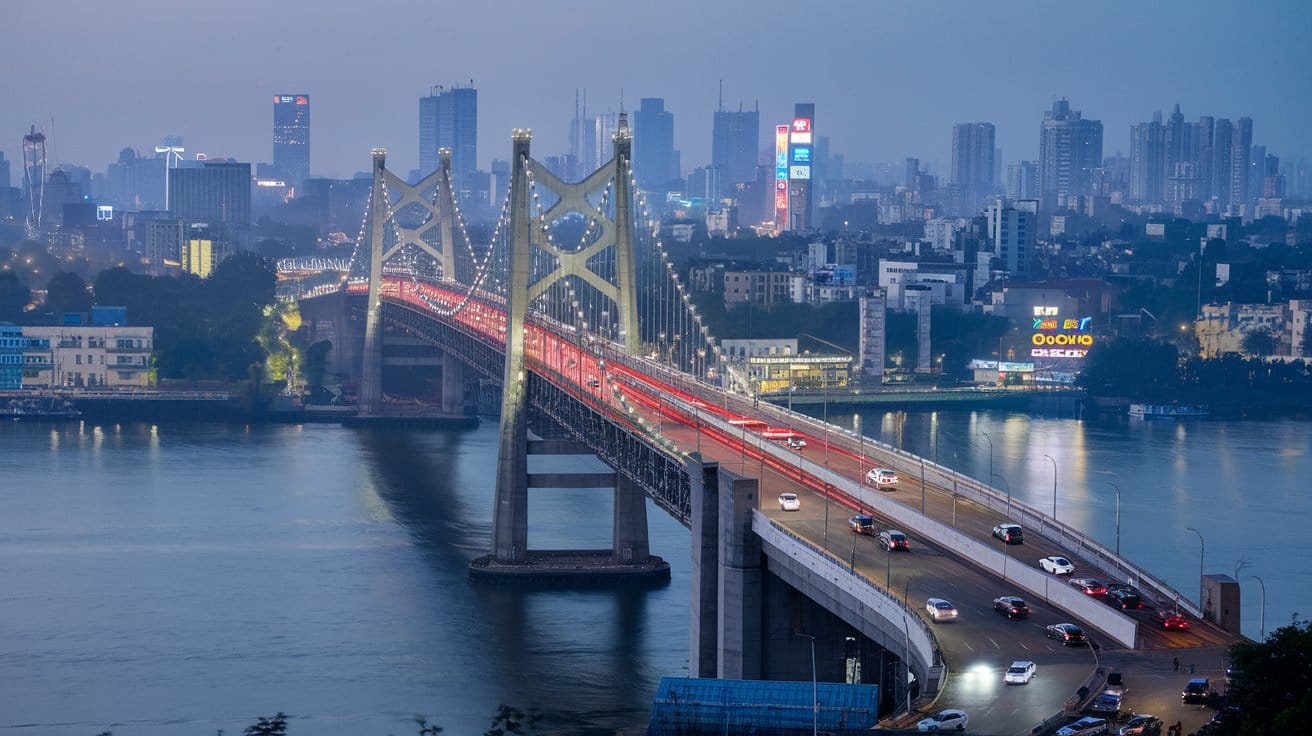
Another must-visit landmark in Kolkata is the Howrah Bridge, an engineering marvel that connects the city to Howrah on the western bank of the Hooghly River. This iconic bridge, with its massive steel structure, is one of the busiest cantilever bridges in the world and a symbol of Kolkata’s industrious spirit. The view of the bridge at night, illuminated by lights, is a sight to behold. Whether you are crossing it on foot or admiring it from a distance, the Howrah Bridge is a testament to Kolkata’s architectural ingenuity.
Dakshineswar Kali Temple
For those seeking spiritual solace, the Dakshineswar Kali Temple is one of Kolkata’s most revered sites. Dedicated to the goddess Kali, the temple is situated on the banks of the Hooghly River and offers a peaceful retreat from the hustle and bustle of the city. The temple is also closely associated with the famous saint Ramakrishna Paramhansa, who spent a significant part of his life here. Pilgrims and tourists alike flock to this temple to seek blessings and to witness the beautiful rituals and festivals that take place throughout the year.
FAQs
The best time to visit Kolkata, West Bengal is between October and March, when the weather is cooler and more comfortable for sightseeing. The city also comes alive during festivals like Durga Puja, making it an exciting time to visit.
Kolkata is well-connected by air, rail, and road. Netaji Subhas Chandra Bose International Airport serves as the city’s main gateway, with flights connecting it to major cities in India and abroad. The city also has excellent railway connections.
Other notable landmarks include the Indian Museum, Marble Palace, Eden Gardens, and the Kalighat Temple.
Yes, Kolkata is generally safe for tourists. As with any major city, it’s advisable to take standard precautions, especially in crowded areas.
The primary language spoken in Kolkata, West Bengal is Bengali, although Hindi and English are also widely understood.
The Serene Darjeeling Hills
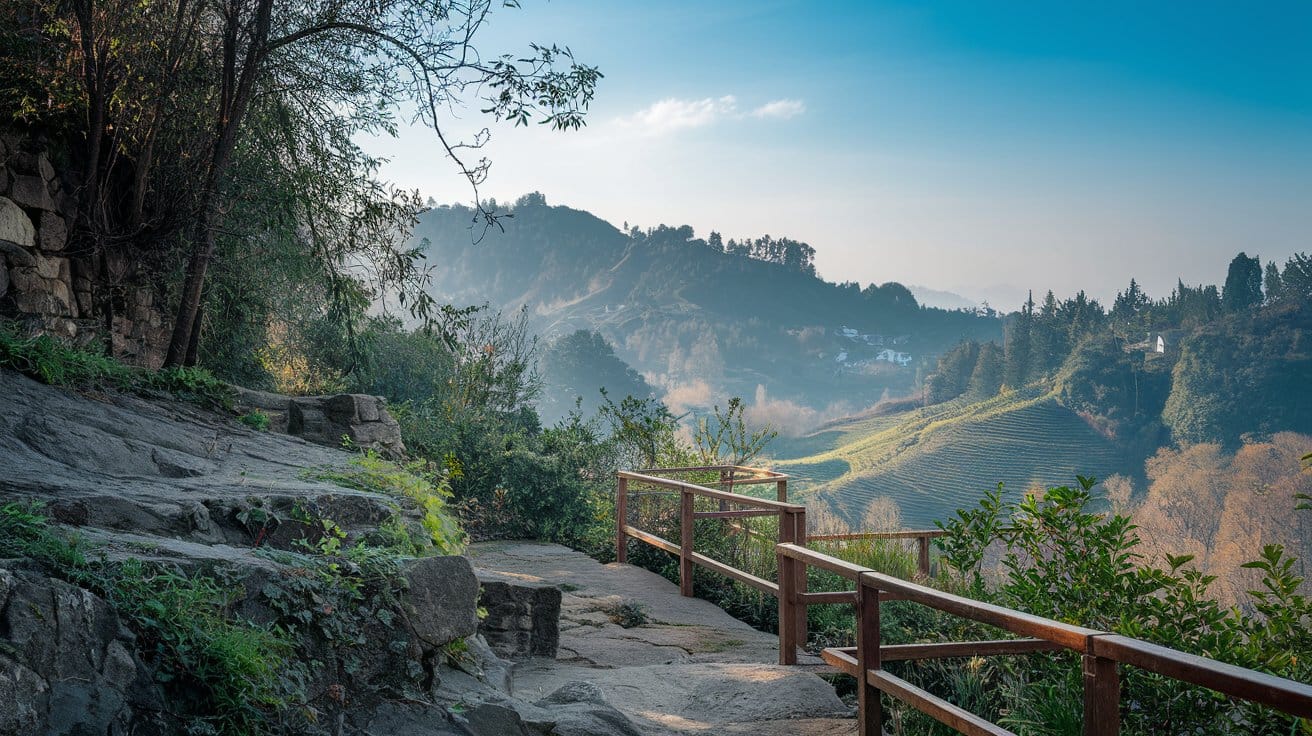
Nestled in the Himalayan foothills, Darjeeling is one of West Bengal’s most serene and picturesque destinations. Known as the “Queen of the Hills,” this charming hill station offers breathtaking views of snow-capped peaks, including Kanchenjunga, the third-highest mountain in the world.
Darjeeling’s iconic toy train, a UNESCO World Heritage Site, takes you on a nostalgic journey through the hills. The region is also famous for its sprawling tea estates, where visitors can experience tea-tasting sessions and learn about the production of Darjeeling’s world-renowned tea.
Adventure enthusiasts can explore trekking routes like Sandakphu, while nature lovers can revel in the tranquility of places like Tiger Hill and Senchal Lake. Darjeeling truly embodies the serene beauty of West Bengal.
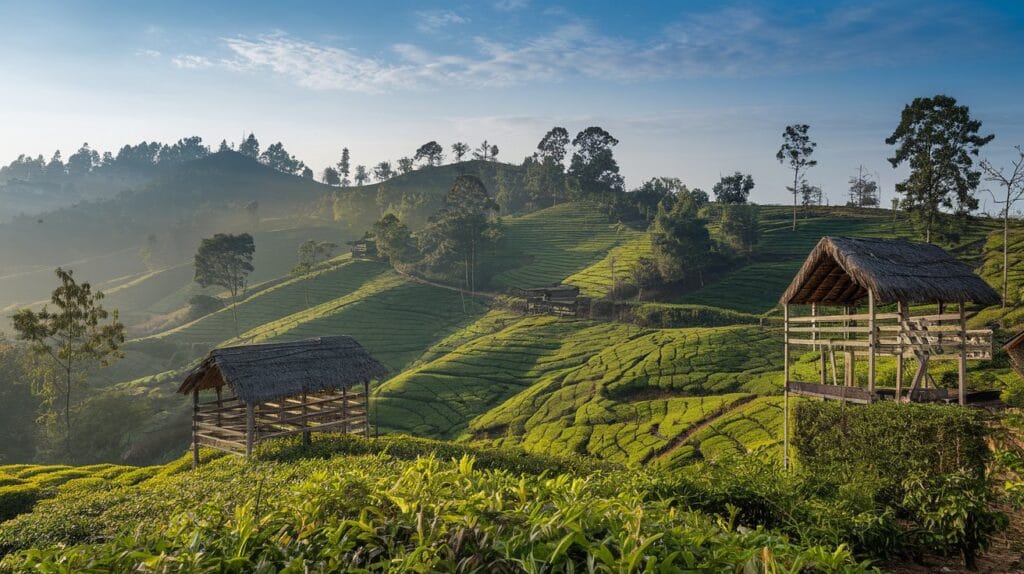
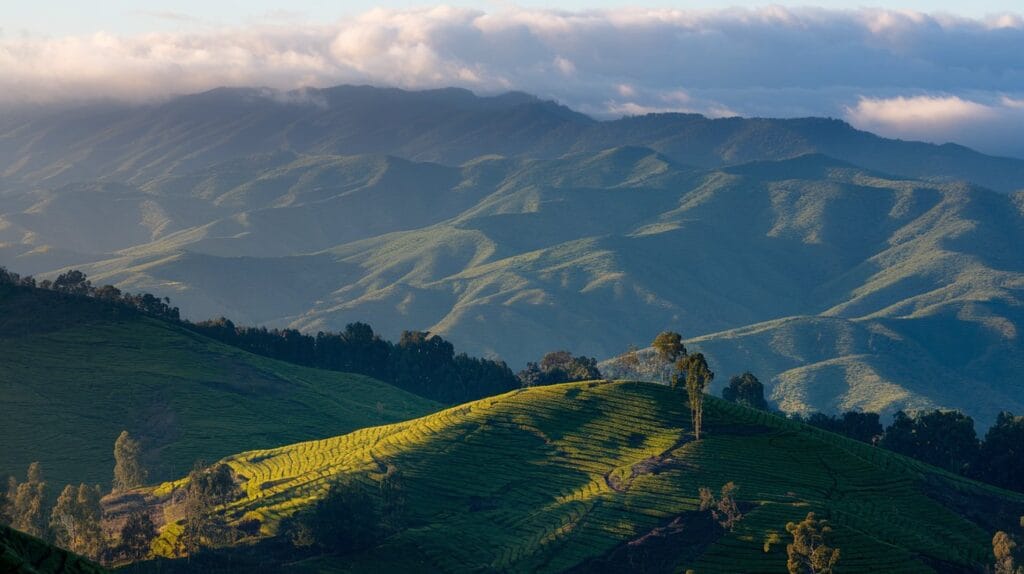
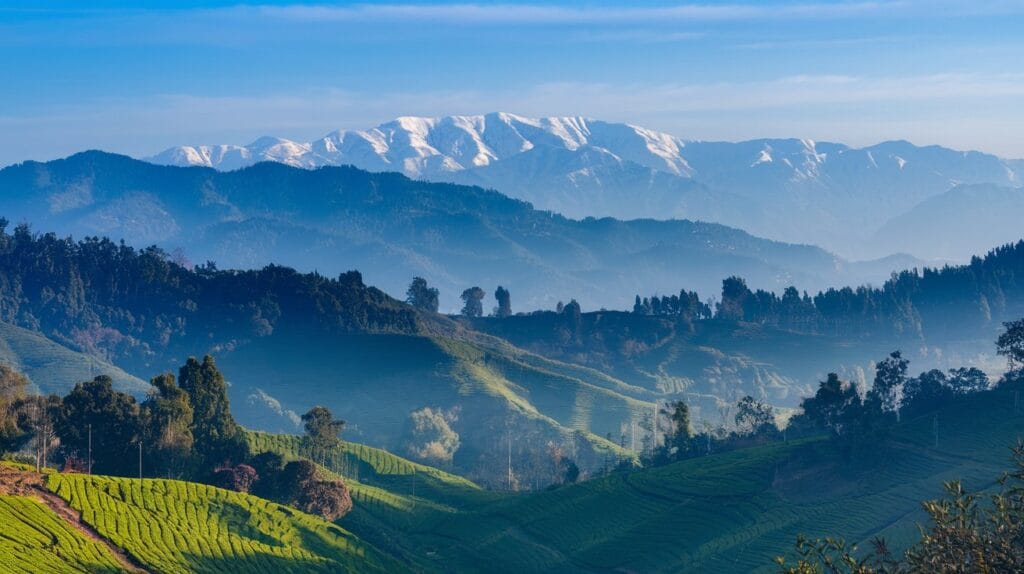
FAQs
The best time to visit West Bengal is between October and March. The weather is pleasant, and major festivals like Durga Puja add to the experience.
Kolkata is known for its literary heritage, colonial-era architecture, vibrant art scene, and delectable street food. It’s also the hub of cultural events and festivals in West Bengal.
Darjeeling is renowned for its stunning Himalayan views, iconic toy train, tea estates, and serene atmosphere. It’s a popular destination for nature lovers and adventure enthusiasts alike.
Yes, West Bengal is generally safe for tourists. However, like any travel destination, it’s important to stay aware of your surroundings and follow safety guidelines.
Darjeeling can be reached via the nearest airport, Bagdogra, or the New Jalpaiguri (NJP) railway station. From there, you can take a cab or a toy train to the hills.
Odisha: A Journey Through Temples, Beaches, and Tribal Heritage
Odisha, a stunning state on India’s eastern coast, is a hidden gem that offers a rich blend of cultural heritage, natural beauty, and spiritual significance. From its ancient temples to its pristine beaches and vibrant tribal culture, Odisha is a destination that promises to captivate the hearts of all who visit. If you’re looking for a place that combines history, spirituality, and untouched landscapes, Odisha is the perfect spot for your next adventure. Let’s dive into the incredible experiences that await in this fascinating region.
Temples: A Spiritual and Architectural Marvel
One of the defining features of Odisha is its magnificent temples, which are an epitome of the state’s rich spiritual history and architectural brilliance. Odisha is home to some of the most famous temples in India, and visiting these sacred sites is like stepping back in time to experience the grandeur of ancient Indian culture.
The Sun Temple in Konark is undoubtedly the most iconic of all. This UNESCO World Heritage Site, built in the 13th century, is designed in the shape of a chariot, with intricately carved stone wheels and horses. The temple’s grandeur is awe-inspiring, and the level of craftsmanship involved is a testament to the architectural genius of ancient Odisha. Konark is not just a temple; it’s a symbol of the state’s rich artistic traditions and deep spiritual roots.
Puri, another spiritual hub of Odisha, is home to the renowned Jagannath Temple. This temple is one of the Char Dham pilgrimage sites and attracts millions of devotees every year, especially during the famous Rath Yatra (Chariot Festival). The temple is dedicated to Lord Jagannath, an incarnation of Lord Vishnu, and the rituals conducted here are an integral part of the religious and cultural fabric of Odisha. The vibrant atmosphere of Puri, especially during the Rath Yatra, makes it one of the most sacred and lively places in the region.
The Lingaraj Temple in Bhubaneswar, the capital of Odisha, is another architectural masterpiece, showcasing the grandeur of Kalinga architecture. The temple, dedicated to Lord Shiva, stands as a symbol of the state’s deep connection to its religious roots, with beautifully sculpted walls and serene surroundings that invite both reflection and awe.
Beaches: Serenity by the Sea
When you think of Odisha, the first thing that may come to mind is its ancient temples and rich cultural heritage. However, this coastal state is also blessed with some of India’s most tranquil and scenic beaches. With a long stretch of coastline along the Bay of Bengal, Odisha is the perfect place for beach lovers who want to enjoy the serene beauty of the sea without the crowds typically found at more popular beach destinations.
Puri’s beach, located near the famous Jagannath Temple, is one of the most well-known beaches in Odisha. The golden sands and the rhythmic sound of the waves crashing against the shore create an inviting atmosphere for relaxation. Visitors can enjoy the calming sea breeze, participate in various water sports, or simply take a peaceful walk along the beach, watching the stunning sunsets.
For those looking for a quieter experience, Odisha has several lesser-known beaches that are perfect for a peaceful getaway. Chandrabhaga Beach, located near the Sun Temple in Konark, is a beautiful stretch of coastline where you can enjoy swimming in clean waters and bask in the serenity of the surroundings. Gopalpur Beach, further south, is another hidden gem, offering a serene environment and the opportunity to witness breathtaking sunrises and sunsets.
These beaches in Odisha provide the perfect escape for travelers seeking tranquility, natural beauty, and a refreshing break from the hustle and bustle of everyday life.
Tribal Heritage: A Living Tradition of Culture and Craft
Odisha is home to one of the richest tribal cultures in India, with over 60 distinct tribes calling the state their home. These tribes have their own unique customs, rituals, art forms, and languages, adding to the cultural mosaic that makes Odisha such a fascinating destination. Visiting the tribal areas of Odisha offers travelers a rare opportunity to experience a way of life that has remained largely unchanged for centuries.
The Kondh, Bonda, and Saora tribes are some of the well-known tribes of Odisha, and their vibrant festivals, rituals, and traditional crafts are an important part of the state’s cultural heritage. The Tribes of Odisha are renowned for their intricate handloom textiles, pottery, and jewelry, much of which is still made using age-old techniques passed down through generations. The tribal artisans in Odisha produce beautiful items that are not only a reflection of the local culture but also hold artistic value, making them perfect souvenirs for visitors.
The tribal festivals, such as the Chhau dance of the Seraikela-Kharsawan tribe, and the Makar Sankranti celebrations in the tribal regions of Odisha, showcase traditional music, dance, and rituals that are a testament to the deep connection these tribes have with nature and the spiritual world. The Chhau dance, in particular, is an energetic martial art form performed during festivals and is characterized by colorful masks and vibrant performances that are sure to leave visitors in awe.
Visiting the tribal villages of Odisha offers an immersive experience that allows travelers to connect with the indigenous cultures and learn about their traditional lifestyles. Whether you’re visiting the remote villages or witnessing the tribal dances and rituals, Odisha’s tribal heritage provides an authentic and enriching cultural experience.
Odisha is a state that beautifully combines its spiritual significance, natural beauty, and vibrant tribal cultures into a unique and compelling destination for travelers. Whether you’re marveling at the ancient temples, enjoying the serene beaches, or exploring the rich traditions of the indigenous tribes, Odisha offers an unforgettable journey through its cultural and natural wonders. Don’t miss the chance to explore this hidden gem of India—where history, nature, and culture come together to create an extraordinary experience.
Known for Its Magnificent Temples Like the Sun Temple in Konark and Pristine Beaches Such as Puri
Magnificent Temples
One of Odisha’s most iconic landmarks is the Sun Temple in Konark, a UNESCO World Heritage Site. Built in the 13th century, this architectural marvel is designed as a colossal chariot dedicated to the sun god. Intricate carvings depicting mythological tales, animals, and celestial beings make it a masterpiece of ancient Indian craftsmanship.
Another unmissable site is the Jagannath Temple in Puri, one of the Char Dham pilgrimage sites for Hindus. The temple is renowned for its annual Rath Yatra, during which enormous chariots carry the idols of Lord Jagannath, Balabhadra, and Subhadra through the streets of Puri.
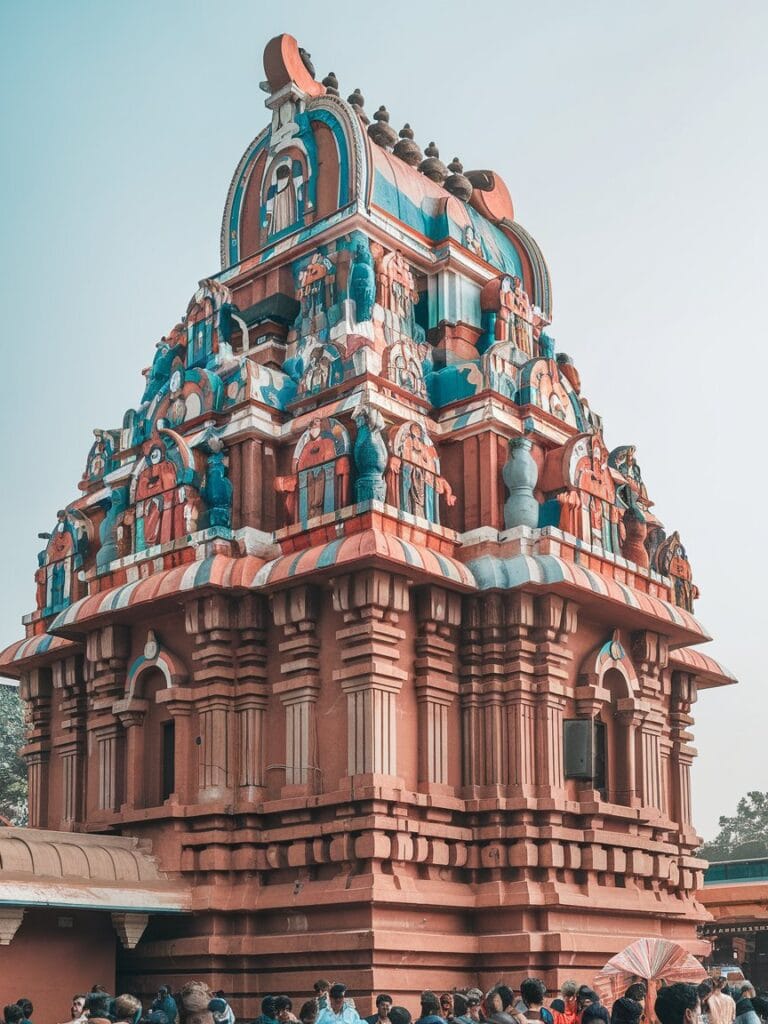
Pristine Beaches
Odisha is also home to some of India’s most beautiful beaches. Puri Beach, with its golden sands and azure waters, offers both spiritual solace and a laid-back coastal vibe. It’s an excellent spot to witness local fishermen in action and enjoy vibrant beachside markets.
Another unique beach is Chandipur Beach, famous for its vanishing sea phenomenon, where the water recedes up to 5 kilometers during low tide. Gopalpur Beach, on the other hand, is a serene and relatively untouched haven perfect for relaxation.
These destinations highlight Odisha’s seamless blend of natural beauty and cultural significance.

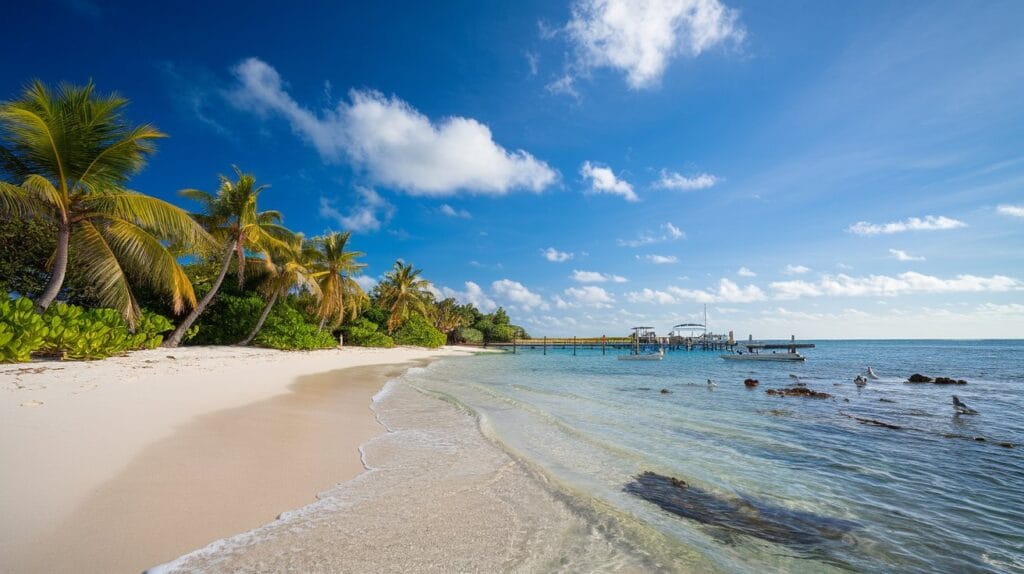
FAQs
The ideal time to visit Odisha is between October and March when the weather is pleasant, and many festivals like Rath Yatra and Konark Dance Festival take place.
Odisha is well-connected by air, rail, and road. The Biju Patnaik International Airport in Bhubaneswar serves as the primary gateway to the state.
Key destinations include the Sun Temple in Konark, Jagannath Temple in Puri, Chilika Lake, and Simlipal National Park.
Odisha stands out for its rich cultural heritage, ancient temple architecture, unique tribal traditions, and scenic coastal landscapes.
Yes, Odisha is generally safe for tourists. However, it’s advisable to take standard precautions, especially when exploring remote areas.
A Glimpse into Assam's Wonders
Eastern and Northeastern India are home to some of the most breathtaking landscapes, cultural richness, and natural wonders. Among these, Assam stands out as a gem, offering an unparalleled mix of lush greenery, diverse wildlife, and the life-giving Brahmaputra River. Let’s explore three captivating aspects of Assam: its verdant tea gardens, incredible wildlife, and the majestic Brahmaputra.
1. Tea Gardens: Assam's Green Gold
When you think of Assam, tea is likely the first thing that comes to mind. Renowned globally for its robust flavor and rich aroma, Assam tea is cultivated in vast, lush plantations that stretch across the state. The tea gardens, with their meticulously pruned bushes and misty morning hues, are a visual treat.
The state is the largest tea producer in India, and its tea plantations, such as those in Jorhat and Dibrugarh, are among the oldest in the country. Visiting these gardens offers a unique experience where you can witness the intricate process of tea-making—from plucking the tender leaves to processing them in local factories. Walking amidst the greenery of Assam’s tea estates gives you a taste of the state’s heritage and its profound connection to tea culture.
2. Wildlife: A Biodiversity Hotspot
Assam is a treasure trove of wildlife, boasting some of the most unique and endangered species on the planet. The Kaziranga National Park, a UNESCO World Heritage Site, is synonymous with the one-horned rhinoceros. It is also home to Bengal tigers, elephants, swamp deer, and an incredible variety of birds.
Manas National Park, another UNESCO site, offers a blend of scenic beauty and rich biodiversity, making it a must-visit for nature lovers. Assam’s wetlands, forests, and grasslands create diverse ecosystems that support rare flora and fauna, making it a paradise for wildlife enthusiasts and photographers.
Whether you’re on a jeep safari spotting rhinos or birdwatching in the early morning, Assam’s wildlife leaves you with unforgettable memories.
3. The Mighty Brahmaputra: Assam's Lifeline
The Brahmaputra River is not just a geographical feature in Assam; it is the lifeline of the state. Flowing majestically across its plains, this river shapes the culture, economy, and daily lives of the people.
The Brahmaputra is known for its powerful currents and breathtaking views, especially during sunset. River cruises offer a tranquil way to explore its beauty, with opportunities to witness the picturesque river islands, including Majuli, the world’s largest river island.
The river also supports a rich ecosystem and provides a livelihood to many locals through fishing and agriculture. Additionally, it plays a central role in many cultural and religious festivals, such as Bihu, where the riverbanks come alive with vibrant celebrations.
4.Assam's Kaziranga National Park
A trip to the Northeastern States would be incomplete without visiting Kaziranga National Park in Assam. Known for its vast grasslands, wetlands, and dense forests, Kaziranga is a UNESCO World Heritage Site and is home to the endangered one-horned rhinoceros. The park is also a sanctuary for tigers, elephants, and various species of birds, making it a dream destination for wildlife enthusiasts and photographers. The park offers jeep safaris and elephant rides, allowing visitors to experience its incredible biodiversity up close. A visit to Kaziranga is a reminder of the pristine beauty and natural wealth that the Northeastern States offer.
Conclusion
Assam, with its tea gardens, diverse wildlife, and the mighty Brahmaputra, is a land of unparalleled beauty and cultural significance. Whether you’re sipping a freshly brewed cup of Assam tea, spotting a one-horned rhino, or sailing along the Brahmaputra, this enchanting state offers experiences that stay with you forever.
Plan your trip to explore the wonders of Assam and uncover the heart of Eastern and Northeastern India!
Discovering Meghalaya
Eastern and Northeastern India are home to some of the most enchanting natural wonders, and among them lies Meghalaya, aptly called “The Abode of Clouds.” This picturesque state, nestled in the lap of nature, offers a blend of surreal landscapes, intriguing traditions, and marvels of engineering by nature itself. In this blog, we’ll delve into two of Meghalaya’s most iconic features: “The Abode of Clouds” and its fascinating Living Root Bridges.
1. The Abode of Clouds
The name Meghalaya translates to “The Abode of Clouds,” and it’s no exaggeration. This state is famed for its mist-covered hills, cascading waterfalls, and ethereal landscapes that seem straight out of a dream. Cherrapunji and Mawsynram, two towns in Meghalaya, hold the title of being the wettest places on Earth, thanks to their heavy rainfall.
The rolling hills of Meghalaya are often enveloped in clouds, creating a magical, otherworldly ambiance. The lush greenery, dotted with vibrant flowers and crystal-clear streams, makes it a paradise for nature lovers. Trekking through the hills, you’ll encounter panoramic views, serene valleys, and untouched forests that showcase the state’s raw beauty.
If you’re a fan of waterfalls, Meghalaya won’t disappoint. Iconic spots like Nohkalikai Falls, the tallest plunge waterfall in India, and Seven Sisters Falls, a stunning cascade of seven streams, will leave you in awe. Exploring these natural wonders gives a sense of why Meghalaya is truly the “Abode of Clouds.”
2. Living Root Bridges
One of the most fascinating features of Meghalaya is its Living Root Bridges, a testament to the ingenuity of the Khasi and Jaintia tribes. These bridges, made from the roots of rubber fig trees, are living structures that grow stronger over time.
Found primarily in the dense forests of Cherrapunji and Mawlynnong, these root bridges are both functional and awe-inspiring. The villagers guide the roots over decades to intertwine and form sturdy pathways, capable of withstanding heavy foot traffic and monsoon rains. Some of these bridges are over a hundred years old, showcasing a harmonious coexistence with nature.
The Double-Decker Living Root Bridge in Nongriat is particularly famous, offering a unique trekking experience through lush forests, bubbling streams, and challenging trails. Visiting these bridges is not just about marveling at their beauty but also understanding the sustainable practices of Meghalaya’s indigenous communities.
Meghalaya, often called the “Abode of Clouds,” is a haven for nature lovers, and one of its most intriguing wonders is the Living Root Bridges. These remarkable structures are created by the indigenous Khasi tribe using the roots of rubber trees. Over decades, the roots are carefully guided and shaped to form natural bridges, some of which are hundreds of years old. The most famous of these bridges is in Cherrapunji, and walking across these living bridges feels like stepping into another world—one where nature and human ingenuity harmoniously coexist. The Northeastern States’ commitment to sustainable living is beautifully embodied in these living bridges.
Conclusion
Meghalaya, with its dreamy landscapes and ingenious Living Root Bridges, is a destination like no other. Whether you’re soaking in the misty charm of the “Abode of Clouds” or walking across a centuries-old root bridge, this northeastern gem offers experiences that are as unique as they are unforgettable.
Plan your journey to Meghalaya and let its natural wonders take your breath away!
Bihar
Eastern India is a land steeped in history, spirituality, and cultural richness. Among its prominent states, Bihar holds a unique place, often referred to as the “cradle of civilization.” Known for its ancient heritage and pivotal role in shaping Indian history, Bihar is home to iconic cities and landmarks that continue to attract history enthusiasts and spiritual seekers alike. This blog delves into Bihar’s significance as a historical treasure, with highlights on its ancient cities and cultural legacy.
A Historical Treasure with Ancient Cities Like Nalanda and Bodh Gaya
Nalanda: The Ancient Seat of Learning
Nalanda, one of the world’s oldest universities, is a testament to Bihar’s scholarly heritage. Founded in the 5th century CE, Nalanda was a hub of learning and culture, attracting students and scholars from across Asia. Today, the Nalanda ruins are a UNESCO World Heritage Site, offering a glimpse into the intellectual prowess of ancient India.
Visitors can explore the extensive remains of monasteries, stupas, and temples that once thrived in this vibrant academic center. The newly built Nalanda University continues the legacy of this ancient institution, making Nalanda a symbol of Bihar’s rich academic and cultural history.
Bodh Gaya: The Birthplace of Buddhism
Bodh Gaya is one of the holiest sites for Buddhists worldwide and a key destination in Bihar. It was here, under the sacred Bodhi Tree, that Prince Siddhartha attained enlightenment and became Gautama Buddha. The Mahabodhi Temple, a UNESCO World Heritage Site, marks this transformative moment in history.
The Mahabodhi Temple complex is a serene spiritual haven, featuring intricate carvings and the descendant of the original Bodhi Tree. Pilgrims and visitors from all over the world come to meditate and experience the tranquility of this sacred place. Bodh Gaya’s spiritual significance makes it a cornerstone of Bihar’s identity and an integral part of Eastern India’s cultural fabric.
Jharkhand
Eastern India is a region rich in natural beauty, cultural diversity, and historical significance. Among its states, Jharkhand stands out as a paradise for nature lovers and cultural enthusiasts. Known as the “Land of Forests,” Jharkhand is home to a wealth of natural resources, stunning landscapes, and a vibrant tribal heritage. This blog explores the unique charm of Jharkhand, making it a must-visit destination in Eastern India.
Famous for Its Lush Forests, Waterfalls, and Tribal Heritage
Lush Forests: A Nature Lover's Dream
Jharkhand is blessed with dense forests that cover nearly a third of the state, making it a haven for wildlife and biodiversity. Popular forests like Betla National Park are home to elephants, tigers, and numerous bird species. The Dalma Wildlife Sanctuary near Jamshedpur offers a tranquil escape with its rich flora and fauna.
These forests not only contribute to the state’s ecological balance but also serve as a retreat for those seeking peace and adventure amidst nature.
Waterfalls: A Spectacular Display of Nature’s Beauty
Jharkhand is famous for its breathtaking waterfalls, which are among its most visited attractions. The Hundru Falls, plunging from a height of 98 meters, is a sight to behold and a favorite spot for picnics and photography. Jonha Falls, surrounded by lush greenery, offers a serene escape from urban life.
Another gem is the Dassam Falls, a roaring cascade on the Kanchi River, drawing adventure seekers and nature enthusiasts alike. These waterfalls highlight Jharkhand’s raw and untouched natural beauty.
Tribal Heritage: A Window into Ancient Culture
The vibrant tribal culture of Jharkhand is one of its defining features. The state is home to more than 30 indigenous tribes, each with its own unique traditions, festivals, and art forms. Tribal festivals like Sarhul and Karma are celebrated with fervor, showcasing rituals that honor nature and ancestors.
Art and craft, such as tribal paintings and traditional jewelry, reflect the rich cultural heritage of Jharkhand. Visitors can experience this culture firsthand by visiting tribal villages and exploring local markets.
A Tapestry of Cultural Richness
Eastern and Northeastern India are regions where tradition and modernity coexist beautifully, offering a vibrant display of cultural richness. This part of the country is a treasure trove of traditions and celebrations, showcasing the diversity and unity that define India. Let’s explore the cultural vibrancy of this region through its festivals and traditions.
Festivals: A Celebration of Life
The festivals of Eastern and Northeastern India are a testament to the region’s cultural diversity and spiritual depth. From harvest celebrations to tribal rituals, these festivals reflect the people’s connection to nature, faith, and community.
- Bihu (Assam): One of the most prominent festivals in Northeastern India, Bihu celebrates the Assamese New Year and the harvest season. With its lively dances, traditional songs, and delicious feasts, Bihu brings communities together in a joyous celebration of life and abundance.
- Durga Puja (West Bengal): In Eastern India, Durga Puja is more than a festival; it’s a cultural phenomenon. The streets of Kolkata and other cities come alive with elaborately decorated pandals, cultural performances, and a palpable sense of devotion.
- Hornbill Festival (Nagaland): Known as the “Festival of Festivals,” the Hornbill Festival showcases the traditions of Nagaland’s tribes. From colorful attire to folk dances, this festival offers a glimpse into the unique heritage of the Naga people.
- Losar (Arunachal Pradesh and Sikkim): Celebrated by the Buddhist communities, Losar marks the Tibetan New Year. The festival is characterized by vibrant rituals, traditional music, and dances, making it a spiritually uplifting experience.
From the grandeur of Durga Puja to the earthy charm of Bihu, the festivals of this region embody its cultural richness, offering something for everyone to experience and cherish.
Traditions: A Legacy of Heritage
The traditions of Eastern and Northeastern India are as diverse as its people. Each state, tribe, and community has its own customs and practices, which are deeply rooted in their history and way of life.
- Tribal Heritage of the Northeast: The Northeastern states are home to numerous tribes, each with its own unique traditions. The Apatani people of Arunachal Pradesh, for example, are known for their sustainable agricultural practices, while the Khasis of Meghalaya hold sacred groves that are revered for their spiritual significance.
- Weaving and Handicrafts: Weaving is not just an art in this region; it’s a tradition passed down through generations. The Assamese silk sarees (Muga and Eri), Manipuri handlooms, and Naga shawls are examples of the intricate craftsmanship that showcases the region’s cultural heritage.
- Dance and Music: Traditional dance forms like the Sattriya of Assam, the Manipuri dance, and the folk dances of the tribes are integral to the cultural fabric of Eastern and Northeastern India. These dances, often accompanied by soulful music, narrate stories of devotion, love, and everyday life.
- Cuisine and Culinary Traditions: The food in this region is a reflection of its cultural diversity. From Assam’s tangy fish curry to Nagaland’s smoked pork dishes, the cuisine is a delectable blend of flavors, often prepared using traditional cooking methods.
Iconic Destinations
- Darjeeling, West Bengal: Known for its scenic tea gardens and the majestic Kanchenjunga range, Darjeeling offers breathtaking views and a charming vibe.
- Puri, Odisha: Famous for the Jagannath Temple and its golden beaches, Puri is a must-visit pilgrimage and leisure destination.
- Bodh Gaya, Bihar: A UNESCO World Heritage site, Bodh Gaya is where Lord Buddha attained enlightenment.
- Shillong, Meghalaya: Known as the “Scotland of the East,” Shillong offers mesmerizing waterfalls, lush hills, and vibrant culture.
- Kaziranga National Park, Assam: A haven for wildlife enthusiasts, this UNESCO site is home to the endangered one-horned rhinoceros.
- Gangtok (Sikkim): With its beautiful monasteries, serene lakes, and views of Mount Kanchenjunga, Gangtok is a place of peace and spiritual rejuvenation. It is also the gateway to exploring the lesser-known but stunning destinations of Sikkim.
- Tawang (Arunachal Pradesh): Nestled in the Eastern Himalayas, Tawang is known for its picturesque monasteries, trekking routes, and stunning natural beauty, making it an ideal destination for adventure seekers.
Unique Experiences
Traveling in Eastern and Northeastern India offers experiences that you won’t find elsewhere. From scenic train journeys to interacting with indigenous tribes, this region has something unique for every traveler.
- Tea Tasting in Darjeeling: Witness the tea-making process and savor some of the world’s finest teas.
- Chilika Lake, Odisha: Explore Asia’s largest brackish water lagoon and enjoy birdwatching during the migratory season.
- Festivals of Northeast India: Attend the Hornbill Festival in Nagaland or the Ziro Music Festival in Arunachal Pradesh to immerse yourself in the vibrant local culture.
- Trekking in Meghalaya: Trek through the Living Root Bridges or explore the hidden caves of the Khasi Hills.
- Sunrise at Tiger Hill, Darjeeling: Watch the first rays of the sun illuminate the snow-capped Kanchenjunga.
- River Cruises on the Brahmaputra: Experience the majestic Brahmaputra River in Assam through luxury cruises that offer stunning views of the river’s vast expanse and surrounding landscapes.
- Exploring the Sundarbans: Visit the world’s largest mangrove forest and spot the elusive Royal Bengal Tiger.
- Living Root Bridges in Meghalaya: Marvel at these natural wonders crafted by generations, showcasing harmony between humans and nature.
- Chhau Dance in Odisha: Witness this traditional masked dance, which is a UNESCO-recognized cultural heritage.
- Biodiversity of Arunachal Pradesh: Known for its diverse flora and fauna, Arunachal Pradesh is an adventure lover’s dream, with opportunities for wildlife safaris, bird watching, and exploring unexplored valleys.
- Silk Weaving in Bihar: Learn about the centuries-old tradition of silk weaving in Bhagalpur, often referred to as the “Silk City.”
- Adventure in Sikkim: For adventure lovers, Sikkim offers thrilling experiences like trekking to the Goecha La Pass, visiting the frozen Tsomgo Lake, and exploring high-altitude monasteries.
Tips for Travelers
- Best Time to Visit: Plan your trip between October and March for pleasant weather.
- Pack Smart: Carry comfortable footwear, warm clothes if visiting the hills, and light cottons for coastal areas.
- Travel Safely: Ensure you have local guides for remote areas and follow eco-tourism guidelines, especially in nature reserves.
- Cuisine: Don’t miss regional delicacies like momos in Sikkim, pakhala in Odisha, and sweets like rosogolla in Bengal.
- Connectivity: While major cities are well-connected, some remote areas may have limited internet or mobile coverage.
- Plan Around Festivals: Eastern India’s festivals, such as Durga Puja, Rath Yatra, and Bihu, are incredible cultural experiences. Time your visit to coincide with these celebrations.
- Respect Local Cultures: Eastern India is home to diverse communities, each with unique traditions. Be mindful and respectful of local customs.
- Try Local Cuisine: Don’t miss out on regional delicacies like rosogolla in West Bengal, pakhala in Odisha, and momos in the Northeast.
- Weather Considerations: The weather in Eastern and Northeastern India can vary greatly depending on the region and time of year. The best time to visit is during the cooler months, from October to March. However, if you’re heading to the hills, carry warm clothes, even during summer.
- Permits for Restricted Areas: Some regions, especially in Arunachal Pradesh and Sikkim, require special permits for travelers. Make sure to plan ahead and apply for the necessary permits before your trip.
- Health and Safety: While the region is generally safe, it’s advisable to carry a basic first-aid kit and necessary medications. Be cautious about food and water, especially in remote areas.
- Transportation: Public transportation options may be limited in some parts of Eastern and Northeastern India. It’s a good idea to hire a local guide or rent a vehicle for better accessibility to remote spots.
Conclusion
Eastern India is a captivating blend of natural wonders, spiritual sites, and cultural richness. Whether you’re exploring the beaches of Odisha, the wildlife of Assam, or the tea gardens of Darjeeling, this region promises unforgettable memories. Make sure to embrace the diversity and vibrant spirit of Eastern India as you plan your visit.

